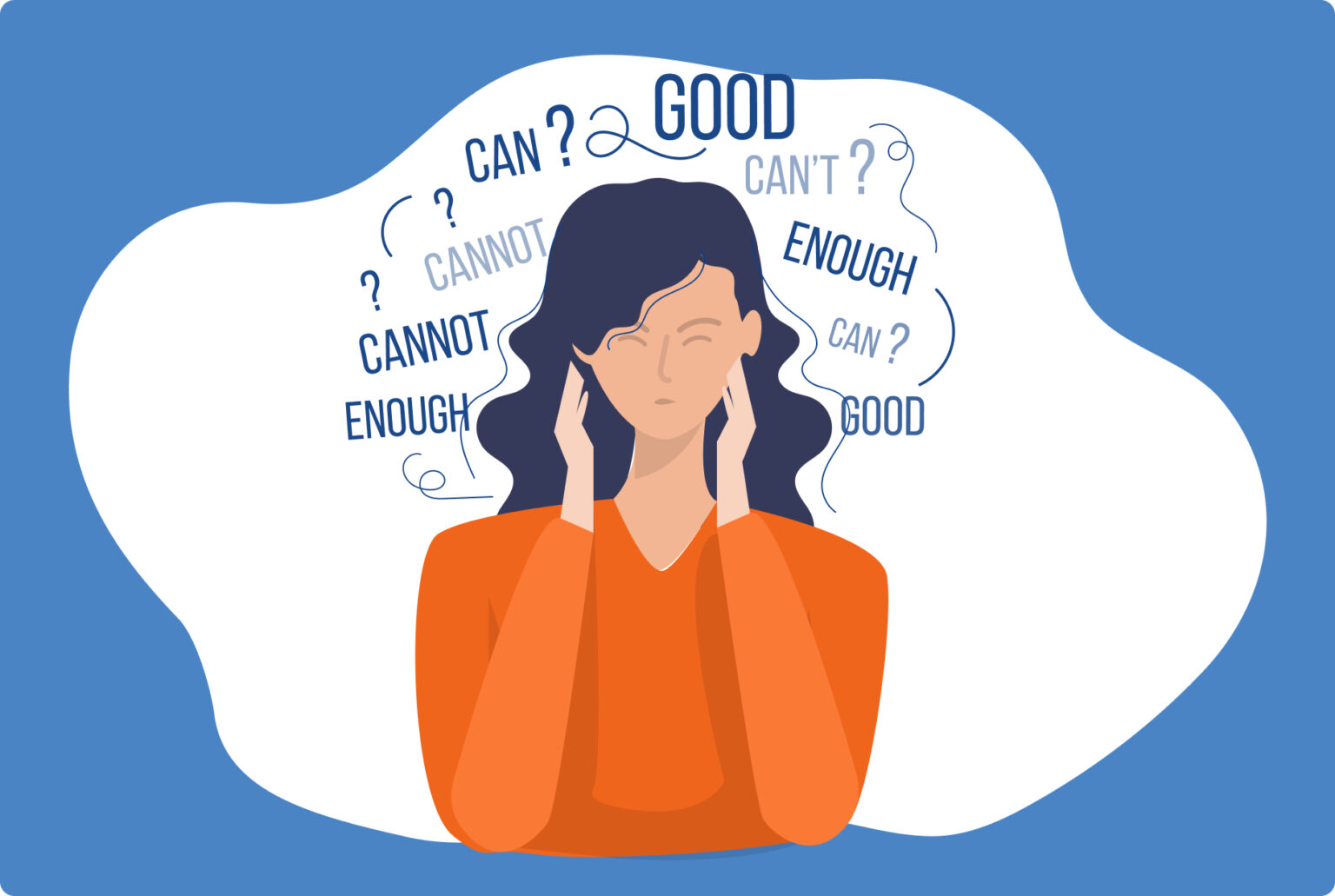Dear Dr. Saline:
“As a research scientist I struggle a lot with writing and perfectionism. Previously I could write pages and now I find myself getting stuck waiting for an idea to be “perfect” before I could write it down. Like there are so many thinking traps for me to unlearn to help me get to the writing part. I’d love your advice on how to deal with this so I can write more easily.”
Sincerely,
Ramon
Dear Ramon:
Many adults with ADHD struggle with perfectionism, especially when it comes to writing. Writing is especially challenging for people of all ages with ADHD because it uses all executive functioning skills simultaneously. In fact, as a “recovering perfectionist” myself who is currently wrestling with writing the initial chapter of my next book, I truly understand the challenges you describe.
Perfection is a Myth
On ‘Taking Control: The ADHD Podcast’ with Nikki Kinser and Pete Wright, I shared some of my professional and personal experiences with perfectionism. Perfectionism is a coping tool that most people develop over the years to manage anxiety. We want to get things just right so nothing unpleasant–like disapproval, failure or criticism–occurs and something positive–like praise or approval–does. According to the American Psychological Association (APA), perfectionism is the tendency to demand of others or of oneself an extremely high or even flawless level of performance – above and beyond what is required by the situation. Perfectionism includes striving towards impossibly high goals and can be characterized by rigid, black-or-white thinking. If something isn’t perfect or close to it, it’s horrible and not worth doing. These thoughts and feelings will make writing anything nearly impossible. How can you be creative and let ideas flow with these unreasonable expectations? You can’t.
shared some of my professional and personal experiences with perfectionism. Perfectionism is a coping tool that most people develop over the years to manage anxiety. We want to get things just right so nothing unpleasant–like disapproval, failure or criticism–occurs and something positive–like praise or approval–does. According to the American Psychological Association (APA), perfectionism is the tendency to demand of others or of oneself an extremely high or even flawless level of performance – above and beyond what is required by the situation. Perfectionism includes striving towards impossibly high goals and can be characterized by rigid, black-or-white thinking. If something isn’t perfect or close to it, it’s horrible and not worth doing. These thoughts and feelings will make writing anything nearly impossible. How can you be creative and let ideas flow with these unreasonable expectations? You can’t.
Aiming for perfection in any area of life is harmful to your sense of self. It thwarts your ability to share your unique gifts and talents with the world. You may be excited to get started on writing an article but then once you start writing, it doesn’t seem to come together as you’ve imagined so you stop. Or, you can’t quite settle on the ‘best’ idea for the piece so nothing happens. One ten year old boy I worked with had ADHD, anxiety and a disorder of written expression. He told me: “I sit there and I sit there and I can’t get anything down on paper. I have ideas but nothing seems right. It’s really bad.” He was not only frustrated but also angry with himself for not being able to produce what he wanted. It was a double whammy.
Two Types of Perfectionism
There are two types of perfectionism: adaptive and toxic. Adaptive perfectionism supports motivation, persistence and productivity. You get started on a task and stick with it until completion because you want to do a good job. You are able to express yourself athletically, artistically, academically or professionally. This type of perfectionism also contributes to the productive side of worry. It helps people by encouraging planning for a family dinner, getting to work on time or remembering to bring your passports on an international trip.
Toxic perfectionism leads to overthinking, inaction, judgment and limitations. It reflects negative mindsets and perpetuates low self-esteem and defensiveness. When toxic perfectionism appears on the scene, it brings along several of its associates: self-criticism, rigidity, fear of disappointment and a failure mentality. Toxic perfectionism combines with worry about disapproval to stop people from making efforts or completing things. As a writer, it can be paralyzing and discouraging.
Perfectionism and ADHD
When perfectionism shows up with ADHD, there is an extra burden of negative self-talk. You may think you’’re not good enough because people have told you that neurodivergence means ‘less than’. It’s so easy to fall into the cycle of “compare and despair”– looking at what other people are doing that you aren’t. Perfectionism is an inadequate attempt to overcompensate for this nagging sense of not measuring up. But, when you hold out your ADHD approval cup to others instead of filling it up yourself, you will always feel deficient.
that neurodivergence means ‘less than’. It’s so easy to fall into the cycle of “compare and despair”– looking at what other people are doing that you aren’t. Perfectionism is an inadequate attempt to overcompensate for this nagging sense of not measuring up. But, when you hold out your ADHD approval cup to others instead of filling it up yourself, you will always feel deficient.
Let’s look at how you can reduce your perfectionism and write more freely. It all comes down to relying on a growth mindset and accepting that being perfect is a myth. Remember, the part of you that wants perfection isn’t perfect either! Breaking out of the “all or nothing” constraints of perfectionism is possible once you apply these helpful strategies.
-
Set Reasonable Goals
You know yourself well enough to assess what is possible and what is too much. People with ADHD often underestimate how long a task will take and overestimate their capacity to accomplish it. How well can you assess the length of time and effort needed to complete items on your list? Start each day by setting up to three achievable goals based on urgency and time deadlines. Next, break these down into microsteps. For example, instead of having a goal of writing the entire introduction to your paper or report, set the goal of writing one page. If that is too tough to begin or feels daunting, set the goal for one paragraph. There is nothing to be ashamed of–our aim is movement. When you finish this goal, great! Keep going onto the other two.
Notice your time. How long is it taking you to reach this goal? This information will help you structure your work periods in the future. If you thought writing a three page essay or report in four hours was doable but it actually took you five hours, then plan on using this information when setting future goals and plans for working. Perfectionism is less likely to creep in and break your momentum when you’re working towards goals you know you can accomplish.
2. Aim for Progress, Not Perfection
Making any kind of progress is better than being stuck. Even if you end up heading in a different direction, it’s still better than doing nothing at all. Getting the words out of your head into a document is the point–not evaluating the quality of each sentence after you write it. You can and will edit what you’ve created later. Just keep writing. Even if what you are writing is a stream of consciousness and doesn’t seem useful, keep going. You never know what you will keep. It’s the flow that matters. So tell your inner ogre who focuses on what is good or bad to sit down. Initial writing is generative; the evaluation will come later.
We learn from our efforts. No one ever figured out how to ride a bike without a few bumps and bruises. If later, you see that what you’ve written isn’t quite working (and this happens to everybody), you will just have to regroup, edit and pivot. Begin again using the same break-it-down strategy that helped you before.
3. Set up Co-working
Working alone can be tough for anybody, but especially for people with ADHD. When there are other people around, the group can energize you, keep you on track and offer support. I practice what I preach. I have a few writing buddies and we all gather on Zoom on Friday mornings. We share what we plan to work on and turn off our mics and get to work. If we want to communicate with each other, we write something in the chat. Then at the end of our session, we check in again, sharing what we did and how we are feeling. It’s so helpful to break the isolation and feel the solidarity. Sometimes if one of us is stuck, we will ask if we can talk through an idea with them. This has been very helpful for addressing writer’s block.
4. Use Technology as Your Personal Assistant
Whether it’s a speech to text program or an online writing tool, there are many aids to help people write more effectively and efficiently. Grammarly, Scrivener or Evernote are great places to start. I especially like to recommend Goblin Tools to my clients. It has a Magic To Do list (type in a big task and it will break it down into smaller steps with a time estimate), Formalizer (transforms text into more formal writing), Compiler (do a brain dump and it will create a list for you), and Estimator (enter a task and it will give you a rough idea of how long it might take).
One of my favorite features of Goblin is the “Judge” tool – this feature acts as an impartial reader of your communication. Dump a draft memo or email into “Judge”, and it will help you to determine if the tone of your communication could be misread, as well as suggest an alternate way to better communicate your message. It’s a great way to escape the grips of paralysis and anxiety caused by those pesky “what if’s”.
5. Maintain a Growth Mindset
A growth mindset is the best tool in your ADHD toolbox, especially for perfectionists. More than just positive thinking, a growth mindset is about accepting yourself for who you are while opening your heart and your mind to learning and improving. It’s about understanding that we grow through trial and error, and that mistakes are part of that process. Errors don’t make you a failure, they reflect your natural humanity. Perfection is not the yardstick against which you measure yourself. Aim for steadiness, consistency, and self-compassion instead. When you live with ADHD, it’s easy to fall back on perfectionism to compensate for executive functioning challenges and social insecurities. Unfortunately, this only feeds the pattern of needing approval to be ‘okay’. A growth mindset along with self acceptance will help you nurture essential resilience and lead you to share what is wonderful about yourself – warts and all.
perfectionists. More than just positive thinking, a growth mindset is about accepting yourself for who you are while opening your heart and your mind to learning and improving. It’s about understanding that we grow through trial and error, and that mistakes are part of that process. Errors don’t make you a failure, they reflect your natural humanity. Perfection is not the yardstick against which you measure yourself. Aim for steadiness, consistency, and self-compassion instead. When you live with ADHD, it’s easy to fall back on perfectionism to compensate for executive functioning challenges and social insecurities. Unfortunately, this only feeds the pattern of needing approval to be ‘okay’. A growth mindset along with self acceptance will help you nurture essential resilience and lead you to share what is wonderful about yourself – warts and all.
 impact how you function cognitively–your thinking, your recall and your concentration. It can also reflect difficulty with making decisions, mental fatigue, slower response time and uncertainty. While we don’t know what causes brain fog exactly, research shows that it’s associated with
impact how you function cognitively–your thinking, your recall and your concentration. It can also reflect difficulty with making decisions, mental fatigue, slower response time and uncertainty. While we don’t know what causes brain fog exactly, research shows that it’s associated with  things, if you will arrive on time, and if people will like you.
things, if you will arrive on time, and if people will like you.
 hyperfocus, try breaking tasks down into 30-45 minute work blocks. You want to give your brain time to reset and rest a bit throughout the day rather than go intooverdrive and burnout. It can be tough for a lot of people who like to hunker down and plow through a set of projects. But overworking like this uses up the natural glucose fuel in the brain and then relies on cortisol. You wind up creating stress that doesn’t need to be there. Trying to remember everything also adds pressure. Give yourself a break and write things down. This also reduces stress and gives you the visual cues you need to be productive and stay focused.
hyperfocus, try breaking tasks down into 30-45 minute work blocks. You want to give your brain time to reset and rest a bit throughout the day rather than go intooverdrive and burnout. It can be tough for a lot of people who like to hunker down and plow through a set of projects. But overworking like this uses up the natural glucose fuel in the brain and then relies on cortisol. You wind up creating stress that doesn’t need to be there. Trying to remember everything also adds pressure. Give yourself a break and write things down. This also reduces stress and gives you the visual cues you need to be productive and stay focused. lunches, our parental priorities shift from “summer fun” to “get it done.” The back-to-school transition helps set the stage for a successful school year. It is
lunches, our parental priorities shift from “summer fun” to “get it done.” The back-to-school transition helps set the stage for a successful school year. It is



 While it’s unrealistic to eliminate negative thinking, reducing its power and influence is crucial for fostering self esteem and resilience–two key issues for women.
While it’s unrealistic to eliminate negative thinking, reducing its power and influence is crucial for fostering self esteem and resilience–two key issues for women.  The most powerful tool women have to counter negative thinking is self-esteem and its cousin, resilience. Confidence empowers you to make decisions, get through life’s ups and downs and recover after setbacks. It’s your inner ally. Confidence also helps quiet the inner critic by reassuring it that your wise, inner self has the resources to meet whatever challenges you are facing. So while you’re quieting your inner critic, turn up the volume on the voice that nurtures you with compassion, kindness and support.
The most powerful tool women have to counter negative thinking is self-esteem and its cousin, resilience. Confidence empowers you to make decisions, get through life’s ups and downs and recover after setbacks. It’s your inner ally. Confidence also helps quiet the inner critic by reassuring it that your wise, inner self has the resources to meet whatever challenges you are facing. So while you’re quieting your inner critic, turn up the volume on the voice that nurtures you with compassion, kindness and support. If you’ve been stuck in a pattern of knocking yourself down, learning to pull yourself back up takes A LOT of practice and grit. Learning to control the volume on that negative voice is a life skill based on persistent resilience and genuine self-esteem. It’s one step at a time so stay patient because two steps forward and one step backwards is still forward motion.
If you’ve been stuck in a pattern of knocking yourself down, learning to pull yourself back up takes A LOT of practice and grit. Learning to control the volume on that negative voice is a life skill based on persistent resilience and genuine self-esteem. It’s one step at a time so stay patient because two steps forward and one step backwards is still forward motion. 
 While being with our family and extended relatives can be rewarding, fun and loving, very few people actually live the Hollywood depictions of holidays and family gatherings. Instead, many of us spend our time together carefully navigating a field littered with unexpected potholes, tripping up and stumbling around. Old wounds, frequent misunderstandings and difficult conversations can make special events challenging.
While being with our family and extended relatives can be rewarding, fun and loving, very few people actually live the Hollywood depictions of holidays and family gatherings. Instead, many of us spend our time together carefully navigating a field littered with unexpected potholes, tripping up and stumbling around. Old wounds, frequent misunderstandings and difficult conversations can make special events challenging.  Many people with ADHD are triggered when they see relatives because these folks may have hurt you previously with criticism, judgments and lectures about the exact things that make you neurodivergent. Yet, you can’t change the past. Since you’ve arrived at this holiday event, it’s safe to assume that some part of you wants to be there. Regardless of how anyone acts or speaks, you don’t have to lower yourself to their level. Reflect on and set limits in advance of the gathering what you will and will not tolerate. Maybe write these down on your phone or in your journal. The more that you feel empowered, the better you will feel about your own responses.
Many people with ADHD are triggered when they see relatives because these folks may have hurt you previously with criticism, judgments and lectures about the exact things that make you neurodivergent. Yet, you can’t change the past. Since you’ve arrived at this holiday event, it’s safe to assume that some part of you wants to be there. Regardless of how anyone acts or speaks, you don’t have to lower yourself to their level. Reflect on and set limits in advance of the gathering what you will and will not tolerate. Maybe write these down on your phone or in your journal. The more that you feel empowered, the better you will feel about your own responses.  Higher levels of stress lower our capacities to think clearly and increase our tendencies for becoming dysregulated. It can be beyond frustrating when your extended family lets you know that you (or your child) are acting ‘inappropriately’, that you lack persistence and that you have unfulfilled potential. Disapproval never feels good and fuels the shame and blame game over and over. Despite being mightily triggered, you can make alternative choices to keep yourself in check and protected.
Higher levels of stress lower our capacities to think clearly and increase our tendencies for becoming dysregulated. It can be beyond frustrating when your extended family lets you know that you (or your child) are acting ‘inappropriately’, that you lack persistence and that you have unfulfilled potential. Disapproval never feels good and fuels the shame and blame game over and over. Despite being mightily triggered, you can make alternative choices to keep yourself in check and protected.  Since we can’t expect ourselves to be perfect in these intense get-togethers, we need a set of tools to assist us in getting through. Think about your ultimate goal for this holiday season and what it means in your family to get along. Then follow these four steps for creating more holiday calm and cheer:
Since we can’t expect ourselves to be perfect in these intense get-togethers, we need a set of tools to assist us in getting through. Think about your ultimate goal for this holiday season and what it means in your family to get along. Then follow these four steps for creating more holiday calm and cheer: 



